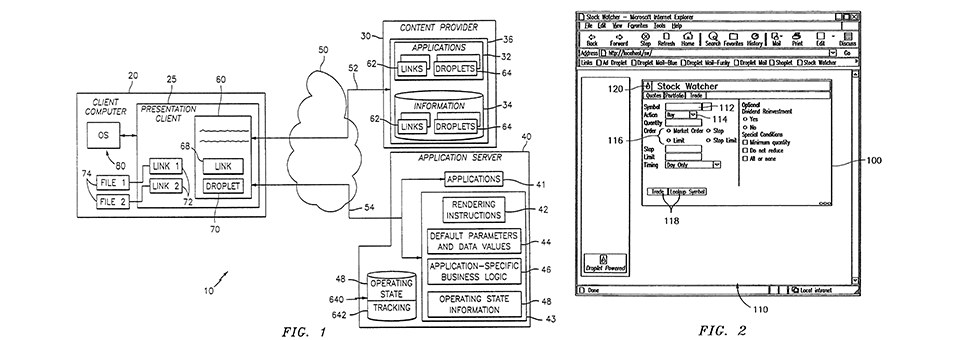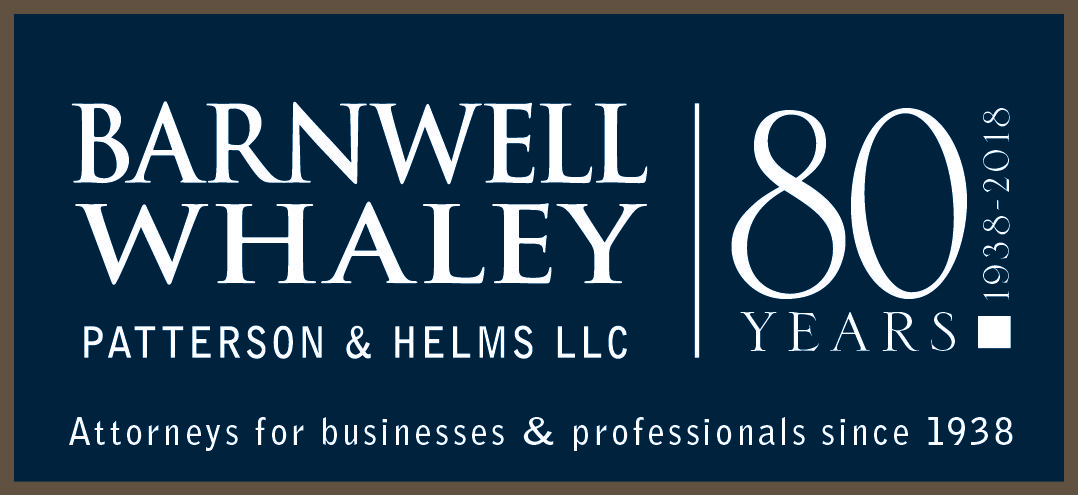
Droplets, Inc., v. E*TRADE Bank
Nos. 2016-2504,-2602
Fed. Cir. Apr. 19, 2018
Opinion by Judge O’Malley with Circuit Judges Dyk and Wallach.
This appeal arises from a finding by the Patent Trial and Appeal Board (“the Board”) that all claims of U.S. Patent No. 8,402,115 (“the Patent”), owned by Droplets, Inc. (“Droplets”), are invalid as obvious under 35 U.S.C. § 103. The issue on appeal is the sufficiency of a priority claim incorporated by reference to avoid invalidating prior art. The United States Court of Appeals for the Federal Circuit (“Federal Circuit”) affirmed the Board’s finding of invalidity.
The Patent listed a claim to domestic priority by referencing a prior application (“‘838 Patent”) and stating “the di[s]closure of which is hereby incorporated by reference in its entirety.” However, no specific claim was made to priority from another prior patent (“’745 Patent”) that was co-pending with a provisional (“’917 Provisional”). The ‘838 Patent claimed priority from the ‘745 Patent, which claimed priority from the ‘917 Provisional.
The question on appeal was whether the ’115 Patent is entitled to the ’917 Provisional’s priority date by virtue of the language in the ’115 Patent that incorporates by reference only the ’838 Patent.
The Court noted that both 35 USC §§ 119 and 120 require a “specific reference” to the earlier filed application. The Court also discussed 37 CFR§ 1.78, which implements these statues. This regulation also requires a “specific reference to each prior filed application to which the application seeks to claim priority.”
Citing Sampson v. Ampex Corp.,463 F.2d 1042, 1045 (2d.Cir.1972), the Federal Circuit stated that Section 120 is not a technical provision, but rather “’it embodies an important public policy,’ and thus (courts) have required strict adherence to its requirements.” “[T]he information that must be disclosed is information that would ‘enable a person searching the records of the Patent Office to determine with a minimum of effort the exact filing date upon which a patent applicant is relying to support the validity of his application or the validity of a patent issued on the basis of one of a series of applications.’” The Court went on to state that “Congress may well have thought that Section 120 was necessary to eliminate the burden on the public to engage in long and expensive search of previous applications in order to determine the filing date of a later patent,” quoting Sticker Indus. Supply Corp. v. Blaw-Knox Co., 405 F.2d 90, 93 (7th Cir. 1968).
The Court also found that the attempt to incorporate by reference failed under 37 CFR §1.57, which permits “incorporation by reference of the prior-filed application as to [any] inadvertently omitted portion of the specification or drawing(s).” However, the Federal Circuit noted that the regulation “provides that an incorporation by reference must include the root words ‘incorporate’ and ‘reference” and must ‘[c]learly identify the referenced patent, application, or publication.’” The court went on to state that while incorporation by reference may be used to satisfy written description requirements under 35 USC 112, a priority claim is not part of the written description. “Accordingly, while 37 C.F.R. §1.57 authorizes an applicant to incorporate by reference essential and nonessential material to satisfy §112, nothing contained therein permits incorporating a priority claim by reference.”
(Author’s Note: In finding that incorporation by reference of a priority claim would create a search burden on
the public, the Court cites cases from 1968 and 1972. When copies of patents are available in the 21st century at no cost to anyone with a computer and internet connection, is there really a burden?)
Read more: Federal Bar member attorneys may access the full case summary by Barnwell Whaley attorney Bill Killough in the May issue of Federal Circuit Case Digest.
Additionally, you may read the full opinion here.
Image: Google patents – patent drawings incomplete
 B.C. “Bill” Killough is a registered patent attorney with Barnwell Whaley law firm with offices in Charleston, SC and Wilmington, NC. On behalf of his clients, Bill has obtained more than 300 United States patents, participated in prosecuting more than 100 foreign patent applications and he has filed more than 1000 trademark applications with the US Patent and Trademark Offices.
B.C. “Bill” Killough is a registered patent attorney with Barnwell Whaley law firm with offices in Charleston, SC and Wilmington, NC. On behalf of his clients, Bill has obtained more than 300 United States patents, participated in prosecuting more than 100 foreign patent applications and he has filed more than 1000 trademark applications with the US Patent and Trademark Offices.




